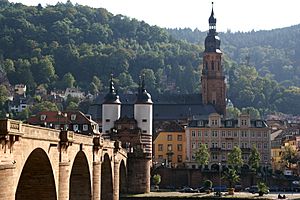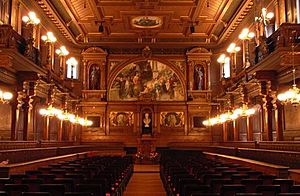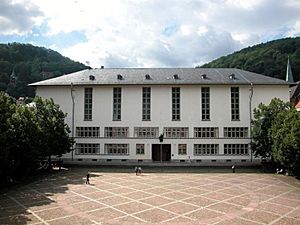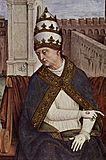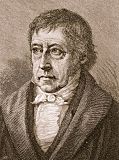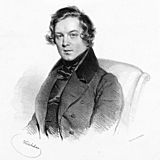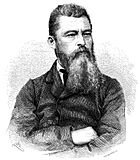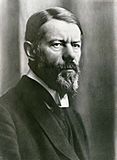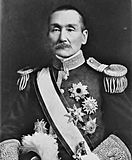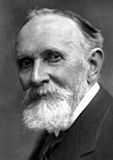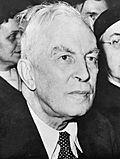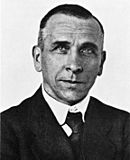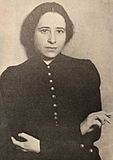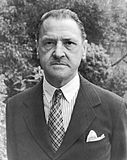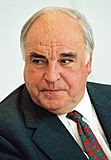Heidelberg University facts for kids
|
Ruprecht-Karls-Universität Heidelberg
|
|

|
|
| Latin: Universitas Ruperto-Carola Heidelbergensis | |
| Motto | Semper apertus (Latin) |
|---|---|
|
Motto in English
|
Always open |
| Type | Public |
| Established | 18 October 1386 |
| Budget | €764.9 million (2018) |
| Chancellor | Holger Schroeter |
| President | Frauke Melchior |
|
Administrative staff
|
8,397 |
| Students | 28,959 (SS2024) |
| Undergraduates | 10,458 |
| Postgraduates | 13,410 |
| 4,114 | |
| Location |
,
,
Germany
|
| Campus | Urban/University town and suburban |
| Colors | Sandstone red and gold |
| Affiliations | German Universities Excellence Initiative, LERU, Coimbra Group, U15, EUA |
 |
|
Heidelberg University, also known as the Ruprecht Karl University of Heidelberg, is a public research university in Heidelberg, Germany. It was founded in 1386. This makes Heidelberg Germany's oldest university. It is also one of the world's oldest universities that is still running.
Heidelberg University is one of the top universities in Germany. It is known as a German Excellence University. It is also a founding member of important groups like the League of European Research Universities. The university has twelve main departments, called faculties. It offers many different study programs. These include degrees for undergraduate, graduate, and doctoral students. Most classes are taught in German. However, many graduate programs are also available in English.
As of 2021, 57 Nobel Prize winners have been connected to Heidelberg. 33 of these were linked directly to the university. Important fields like modern scientific psychiatry and sociology were started by students or teachers here. Each year, about 1,000 students earn their doctoral degrees. More than a third of these students come from other countries. Students from about 130 countries make up over 20% of all students.
Contents
History of Heidelberg University
How the University Started
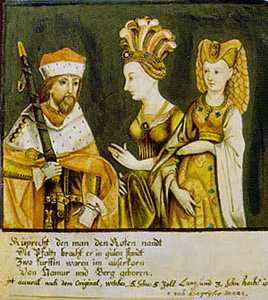
Heidelberg University was founded in 1386. This happened because of a big split in the church called the Western Schism. During this time, there were two popes. German students and teachers in Paris had to leave. Rupert I, a local ruler, saw this as a chance to create a new university.
He got permission from Pope Urban VI to start a school. The university was officially opened on October 18, 1386. The first lecture was held the next day. This made Heidelberg the oldest university in Germany. It was designed like the University of Paris. It had four main subjects: philosophy, theology, law, and medicine. The university grew quickly. By March 1390, 185 students were studying there.
Changes Over Time
In the 1500s, the university was influenced by the Protestant Reformation. Martin Luther visited in 1518. Later, the university became a Calvinist school. The Heidelberg Catechism, an important religious text, was created with help from the university's theology department.
During the Thirty Years' War (1618-1648), the university faced hard times. Its famous library, the Bibliotheca Palatina, was taken to Rome in 1622. Later, in 1693, the city of Heidelberg was almost completely destroyed by French troops.
In the 1700s, the university lost some of its Protestant character. It was influenced by the Jesuits. However, a ruler named Charles Theodore, Elector Palatine helped the university grow again. He added new subjects and scientific institutes.
19th and 20th Centuries
The university was re-established in 1803 by Karl Friedrich, Grand Duke of Baden. It was named after him and Rupert I. In the 1800s, Heidelberg became a center for new ideas like Romanticism and Liberalism. It was also a leader in modern science and medicine. The university became a model for new research universities in America.
In 1900, Heidelberg was one of the first German universities to allow women to study. During the Weimar Republic, it was known for democratic thinking. However, during Nazi Germany (starting in 1933), the university supported the Nazi party. Many staff and students were forced to leave because of their beliefs or background. Books were burned, and the university's motto was changed to "The German Spirit." The university was also involved in terrible programs like Nazi eugenics.
After World War II, the university was rebuilt. It adopted a new motto: "The Living Spirit of Truth, Justice and Humanity." In the 1960s and 1970s, the university grew a lot. A new campus was built for medicine and science. In 2007 and 2012, Heidelberg was named a University of Excellence. This means it gets special funding for research.
In 2022, there was a sad event at the university. A shooting happened, and one person died.
University Campuses
Heidelberg University has facilities in different parts of the city. The main areas are the Old Town Campus and the New Campus.
Old Town Campus
The Old Town Campus is in the center of Heidelberg. It is home to subjects like humanities and social sciences. The "New University" building, opened in 1931, is a main part of this campus. It has large lecture halls and seminar rooms. Many buildings for these subjects are spread around the old part of town. They are usually close to University Square.
Neuenheimer Feld – New Campus
The New Campus, called Neuenheimer Feld, was built starting in the 1960s. It is the largest part of the university. This campus is for science subjects and medicine. It includes the medical school and three large university hospitals. Most student dorms and sports facilities are also here.
Many other research centers are located on the New Campus. These include the German Cancer Research Center. The New Campus is about a 10-minute tram or bus ride from the Old Town.
Bergheim Campus
The Bergheim Campus is in the Bergheim area of Heidelberg. Since 2009, it has housed the departments for economics, political science, and sociology. This campus has a lecture theater, seminar rooms, a modern library, and a cafe.
University Libraries
The University Library is the main library. It has about 6.2 million printed books and other materials. This includes old manuscripts and maps. In 2022, over 43,000 people used the library. It also offers many online resources, like 152,000 scientific online journals.
The library started when the university was founded in 1386. Over time, different collections were added. In the 16th century, a large collection called the Bibliotheca Palatina was created. Sadly, most of it was stolen during the Thirty Years' War. In the 1800s, the library started to rebuild its collection. Today, many of the old manuscripts from the Bibliotheca Palatina can be viewed online.
The university library also has its own publishing house. It publishes scientific works online for free.
How the University Works
University Leadership
The university is run by a team called the Rectorate. The head is the Rector, Professor Frauke Melchior. The Rectorate also includes a Chancellor, who handles money, and three pro-rectors. These pro-rectors are in charge of things like international relations, teaching, and research.
The Senate is like the university's law-making body. It includes the Rectorate members, deans of departments, and elected representatives. These representatives come from professors, staff, and students.
University Departments
After some changes in 2003, the university now has 13 main departments, called faculties. These faculties offer different types of degrees. Most offer Bachelor's, Master's, and PhD degrees. However, some subjects like law and medicine have special state exams.
- The Faculty of Behavioural Sciences and Empirical Cultural Sciences
- The Faculty of Biosciences
- The Faculty of Chemistry and Earth Sciences
- The Faculty of Engineering
- The Faculty of Law
- The Faculty of Mathematics and Computer Science
- The Faculty of Medicine
- The Faculty of Medicine in Mannheim
- The Faculty of Modern Languages
- The Faculty of Philosophy and History
- The Faculty of Physics and Astronomy
- The Faculty of Theology
- The Faculty of Economics and Social Sciences
University Partnerships
Heidelberg University works with many other universities and research centers around the world. It is a founding member of important European university groups. It also has special agreements with 58 partner universities in different continents. Some of these include Cornell University, Harvard University, and the University of Cambridge.
Student Life at Heidelberg
Sports and Activities
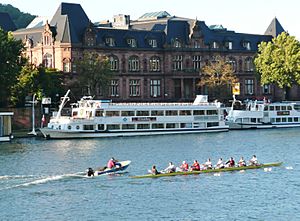
The university offers many sports. Students can join teams for basketball, volleyball, and American football. There are also classes in martial arts, fitness, and dance. Many sports are free for students. Heidelberg's teams are very good, especially in basketball. The university's basketball team, USC Heidelberg, has won 13 national championships.
Students can also join many different groups. These include drama clubs, the university orchestra, choirs, and student newspapers. There are also groups for international students and political discussions.
Student Media
Heidelberg has a student newspaper called "ruprecht." It is one of the largest student newspapers in Germany. It has won awards for its balanced reporting and great design. The university also has Germany's oldest student law review, the Heidelberg Law Review.
Student Groups
Heidelberg is home to 34 student groups called "corporations." These groups were mostly started in the 1800s. They are similar to fraternities in the US. Members wear special colored caps and ribbons for events. Some still practice traditional "academic fencing." These groups aim to keep old traditions alive and build strong friendships.
Nightlife and Fun
Heidelberg is famous for its student nightlife. Students can go to parties organized by student councils or dorms. The city also has many places to go out, fitting different tastes and budgets.
Famous People from Heidelberg University
Many famous people have studied or taught at Heidelberg University. These include founders of new academic fields, philosophers, poets, and scientists. 33 Nobel Laureates have been connected to the university. Nine of them won the Nobel Prize while working there.
Five Chancellors of Germany have attended Heidelberg. The most recent was Helmut Kohl, known for reuniting Germany. Other famous alumni include:
- Pope Pius II
- Composer Robert Schumann
- Chemist Dmitri Mendeleev, who created the periodic table
- Sociologist Max Weber
- Writer W. Somerset Maugham
- Political theorist Hannah Arendt
- Scientist Alfred Wegener, who discovered continental drift
Famous professors have included:
- Philosophers Georg Wilhelm Friedrich Hegel and Jürgen Habermas
- Scientists Hermann von Helmholtz and Robert Wilhelm Bunsen
- Medicine Nobel Laureates Bert Sakmann and Harald zur Hausen
- Chemistry Nobel Laureate Stefan Hell
Images for kids
-
The main entrance of the New University building in 1988, showing the bronze bust of Athena, the Greek goddess of wisdom
-
The University Library's collection includes the Codex Manesse, an important German song manuscript of the Middle Ages.
See also
 In Spanish: Universidad de Heidelberg para niños
In Spanish: Universidad de Heidelberg para niños


